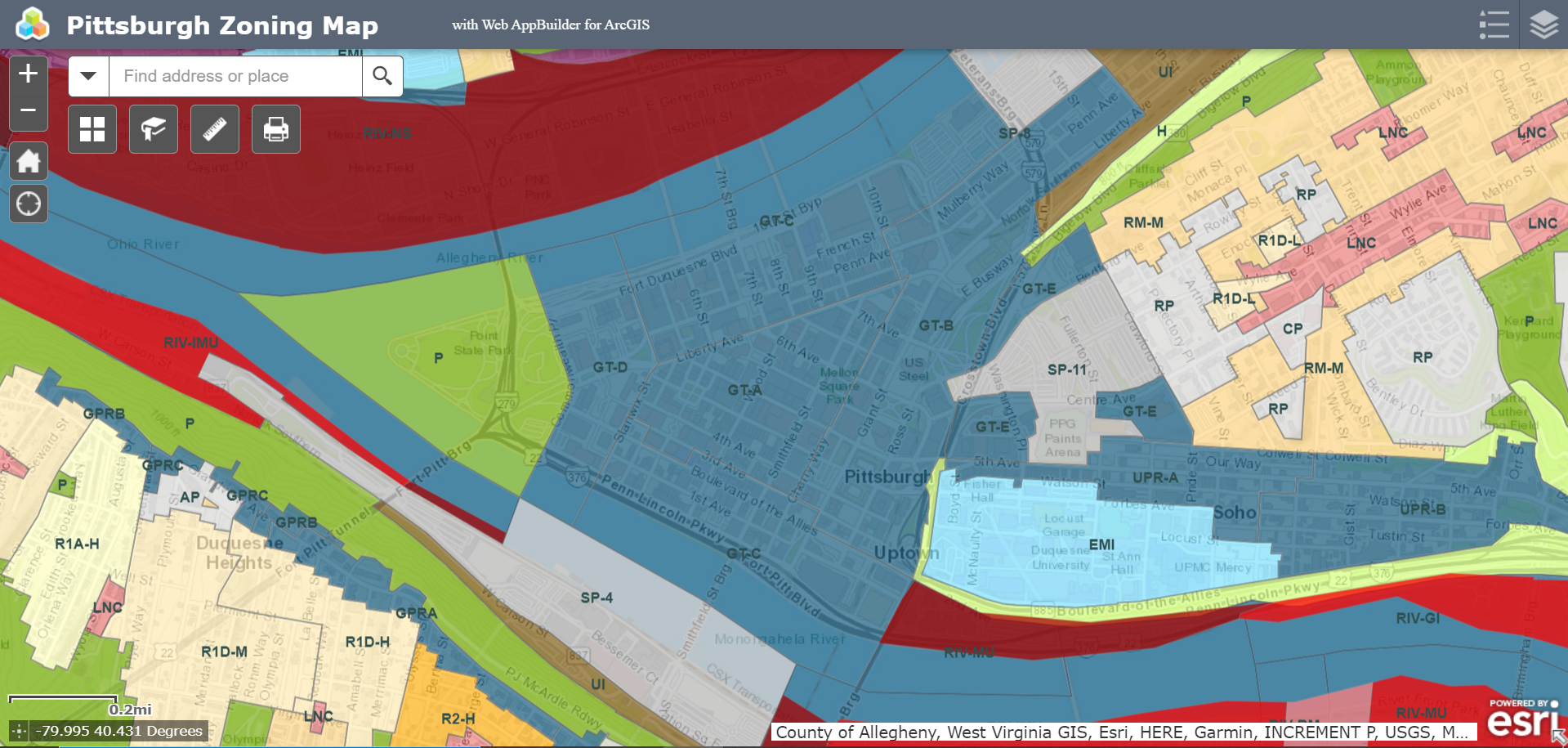Pittsburgh Zoning Districts - GT-D Overview
By Kathleen Oldrey
Introduction
Zoning districts are a fundamental building block of zoning regulations and set the base use, height, and density standards for the area they cover. In some cases, the district also sets the required level of zoning review. Pittsburgh has over 50 distinct mapped zoning districts. This series of guides is unpacking each of these districts.
In this post, we provide an overview of the GT-D (Golden Triangle Subdistrict D) zoning district. Additional posts dive into the density regulations for the GT-D and the use regulations for the full GT as well as provide overviews of the full GT and the other subdistricts: GT-A, GT-B, GT-C, and GT-E.
Refer to our Introduction to Pittsburgh’s Zoning Districts for the complete list of base zoning districts in the city. Pittsburgh’s interactive zoning map can be used to verify the project site’s zoning district.
Overview
The GT-D (Golden Triangle Subdistrict D) zoning district covers 0.07 square miles or 0.14% of Pittsburgh, and is roughly bounded by Commonwealth Place, the Allegheny River, Stanwix Street, and the Monongahela River. It borders areas zoned P, GT-C, and GT-A.
Challenges
All standards that impact the GT district also impact the GT-D subdistrict. The GT-D purpose statement describes a mix of office, commercial, and residential uses, as well as open space, reflecting the subdistrict’s location between the GT-A downtown core on one side and Point State Park on the other.
With the riverfront location, like the GT-C, the GT-D has areas impacted by floodplain and riparian overlays; some areas near the rivers are also within the Potential Steep Slopes Overlay Area. Both the floodplain and steep slope overlays can require applications to undergo additional environmental review. The entire GT-D subdistrict falls within the downtown Parking Reduction zone, which reduces the parking requirements for all uses by 100%, and the Pittsburgh Downtown Partnership RCO area; projects that are within a Registered Community Organization (RCO) area may be required to fulfill additional public process requirements.
Conclusion
As in the other GT subdistricts, development in the GT-C subdistrict may be subject to review by Planning Commission and may involve the RCO process. Depending on the location of the development site, floodplain and other environmental review provisions may also need to be met.

